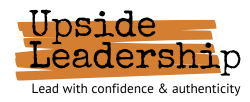Lead with a question (even when you know the answer)
Add powerful questions to your leadership toolbox and see what happens to the capability of your team
We like to have the answer. In school and early in our careers, we are rewarded for knowing our stuff and knowing what to do next. Having the answer feels good; it gives us a nice hit of dopamine, we feel a little bit superior for a moment and it brings out our confidence.
And, … it can pay to slow down and ask a couple of questions first anyway.
You know the situation I’m referring to: you’re working with your team on an annual plan or a team member asks you how to proceed on a project. You know intuitively how to approach the topic. Your intuition is borne from years of experience, knowledge of the space, lots of study, having successes.
Plus, it’s efficient to have the answer. You can just tell someone what to do and move on. We’re busy and talking through stuff isn’t always the fastest way to accomplish things.
As an example, I work with this amazing executive at a fintech organization. She’s been there since the beginning and knows just about everything about the product and the organization and the customers and who does what and how. She knows as much about how things operate as anyone. Her team is inexperienced and she’s being asked to broaden her scope, take on more responsibility. She’s moving fast, by necessity. She’s also a warm, caring human and wants to help people succeed.
When her team asks her how to approach things, her typical response is: ‘Try this, that’ll likely resolve it. If not, let’s talk again and we’ll figure something else out.’ She says this with kindness and professionalism. It comes across not as an order but as a suggestion. But it’s clear the path she wants you to take.
I call this being Directive in your leadership style.
This is efficient and helpful. And it’s totally appropriate when decisions need to be made quickly and with limited discussion (When the theater is on fire, it’s the leader’s job to tell people, ‘Go calmly and quickly to that exit. Now.’)
The challenge, though, to being Directive is that it teaches people to rely on their boss for answers, rather than learning to solve things themselves. It can keep people in a box. And, most decisions don’t need to be made with a ‘the-theater’s-on-fire’ urgency.
An alternative for those of us who are habitual Advisors (those amazing people among us who instinctively know the way forward and have the confidence to share it) is to simply add some Powerful Questions to your process.
A Powerful Question moves people to a more expansive, imaginative, action-oriented place. Powerful Questions usually begin with
- What
- How or
- Tell me about
Powerful questions cannot be answered with a yes or no (they are not binary in nature) multiple choice, or a number. Consider these questions:
- Do you think we should take option A or B?
- What would you do in this situation?
Which of these questions is more likely to leverage the person’s expertise and experience and imagination? Which one expresses more trust? Which one is more likely to convey that you feel the person is fully capable in their work?
In my book, the second question is more useful in developing the capacity in the human being. I call this being Coachlike in your approach.
Other questions which you might find useful:
- What’s important about this situation?
- What would success look like?
- What options do you see?
- Tell me how you’d approach this.
- How else can we look at this?
- What’s getting in our way?
- What would you do next?
- You’ve been in tough situations before. What strengths did you lean into in those cases to resolve things?
Here’s a link to dozens of questions leaders can use in their conversations with team members, as well as another article on the power of questions in your leadership.
Secret bonus hint: avoid the use of ‘Why’ in your questions. Why don’t I want you using ‘Why’? Because, even when the question comes from the most positive of intentions, it still encourages people to defend their decisions, rather than become more imaginative.
So, the suggestion here is this: when you’re approached for your advice or guidance, before you give that brilliant and insightful and clear answer, simply pause and ask a couple of Powerful Questions first.
Yes, the process will go a bit slower at first than you’re used to. And, yes, it’ll feel clunky and slow at first because you’re used to moving fast and making decisions.
Know that even if you ask a couple of questions, you still have that insightful answer in your back pocket and still have the authority to use it. You’ll often find that, in asking questions, you gain greater context for the situation and that can lead to a better solution.
What you’re likely to find over time is that people are bringing you ideas rather than problems. They will build a muscle to deal with their challenges. They will feel more trusted, engaged and heard. These are keys in building a high-performing team.
And you will have expanded your Toolbox, creating more agility and capacity in your Leadership.









